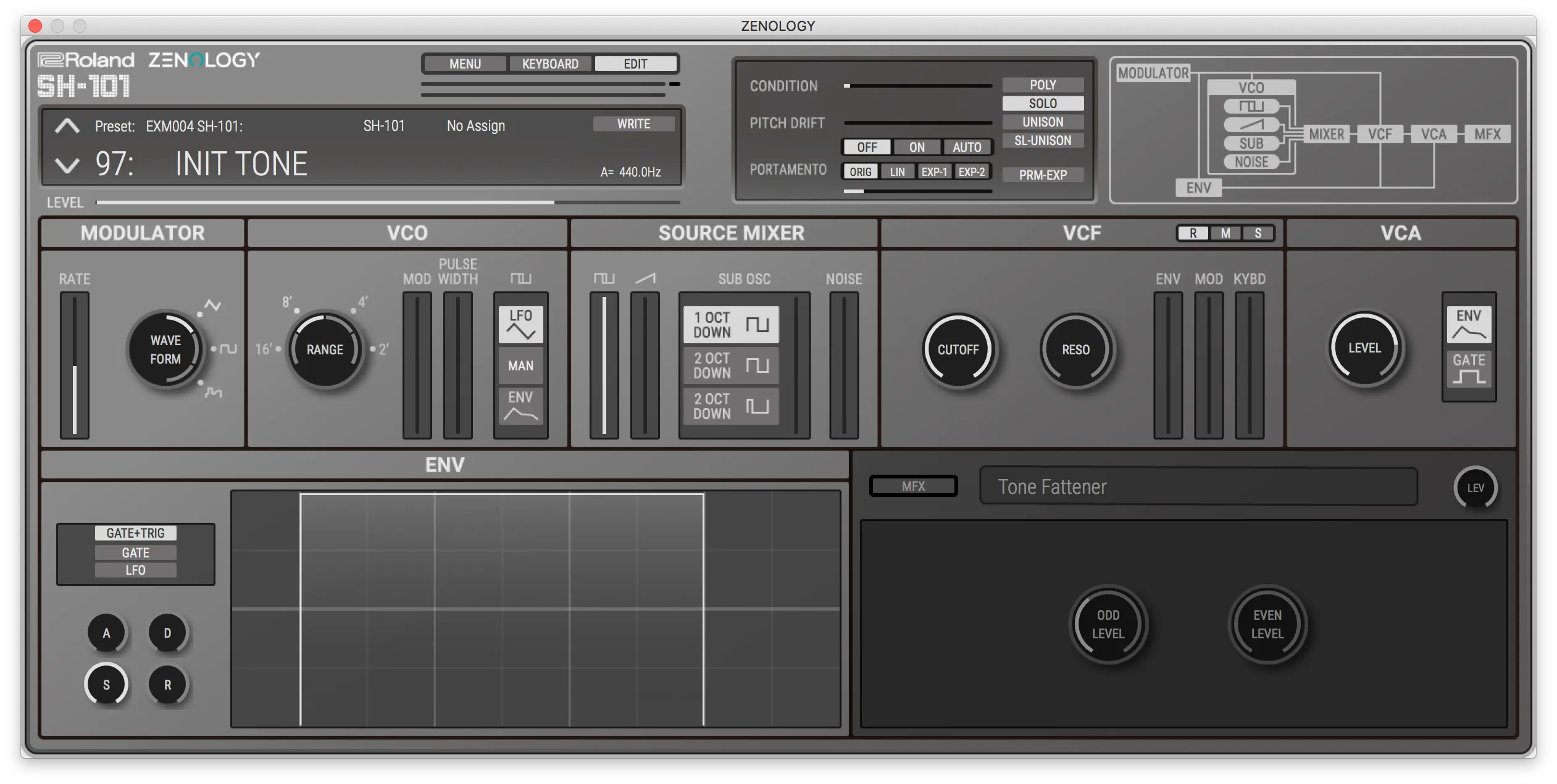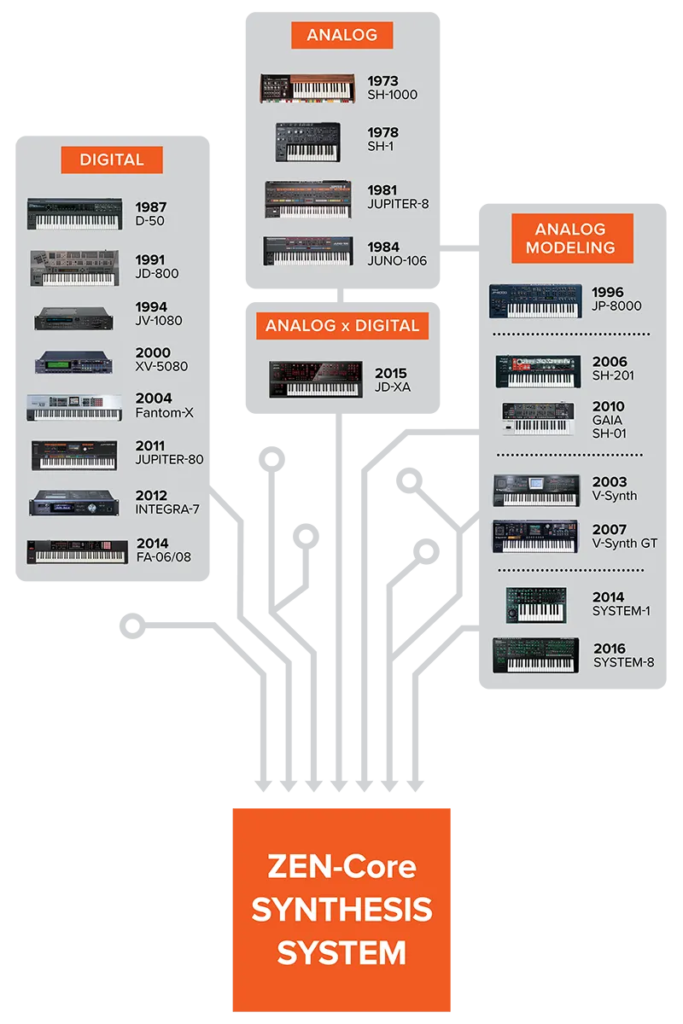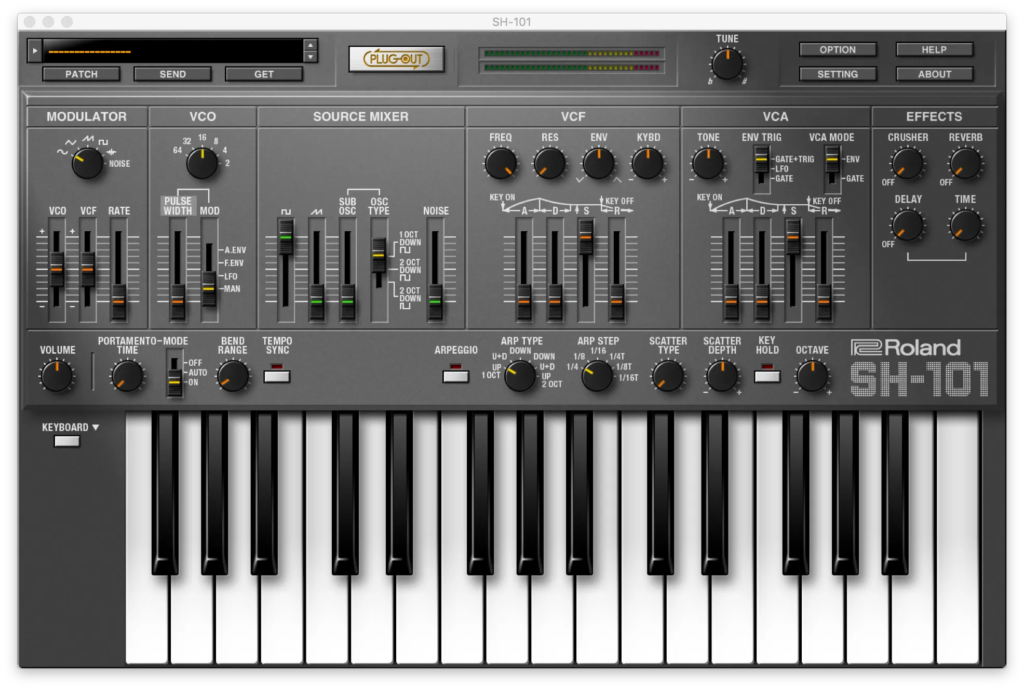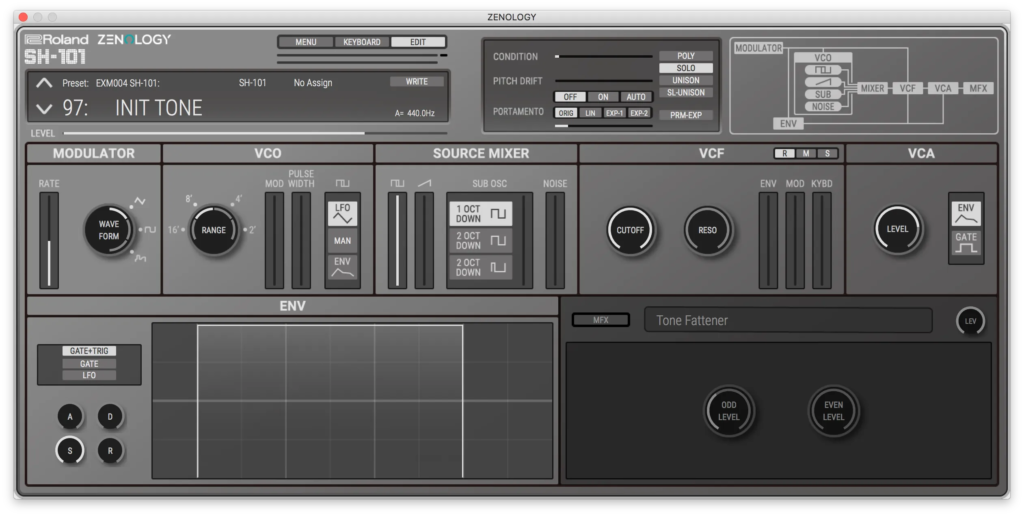
Roland ZEN-Core
How Roland Completely Changed the Playing Field
Roland has managed to give musicians access to the same sound engines not matter what hardware they decide to go with. And it’s a brilliant idea!
Some Background…
A couple of years ago I wrote Roland VirtualSonics, creators of The Roland Cloud which are a digital software rendition of some of Roland’s old analogue and sought-after hardware, giving them my thoughts on a proposed hardware synthesiser called System-D. I wanted something to counterpoint the System-8 but for the D-50, JV-1080 and the rest of the digital line that were being developed. They pretty much share the same concept and philosophy and I wanted a hardware unit to plugout the synthesiser engines to. Plugout is a technique to load a virtual instrument into a hardware and this was made popular on the System-1/1m/8 but you can’t plugout the D-50 nor the JV-1080 to any of them. The System-1/1m/8 can all have the Promars, SH-101, SH-2 and System 100 plugged out while the System-8 alone could also have the Juno-106, Jupiter-8 and JX-3P as additional engines.
The Concept of a Patch
To understand how a Patch is laid out and structured on Roland’s digital synthesisers we need to get a bit nerdy and deep and we need to unravel some of Roland’s cryptical language. Bear with me. It is somewhat important actually. Let’s try to scratch the surface so we’ll understand how similar the D-50, JV-1080 and a few more of Roland’s synthesisers really are.
In Roland lingo, a VCF (Voltage Controlled Filter) is called TVF (Time Variant Filter). A VCA (Voltage Controlled Amplifier) is called TVA (Time Variant Amplifier) and an oscillator is called WG (Wave Generator).
Each Patch on the the D-50 has two Tones; Upper and Lower. Each Tone has two Partials. Each Partial has a WG, TVF and a TVA. Yes, the TVF is only available if you’re using the Synthesizer Sound Generator Partial and not the PCM Sound Generator Partial, but still. The Tones could then be routed in 7 different ways called Structures. A Structure is how the two Partials are interacting with each other to create different types of timbres. If you’re interested how the D-50 sound engine works, check out page 4 in the manual found at Roland’s support page for the instrument here and check out page 6 for the Structure settings. The V-Synth and V-Synth GT is called an Analog Modeling synthesiser yet it has two Tones, Upper and Lower, and each Tone has two oscillators. Roland actually released a VC-1 card turning the V-Synth into a complete reconstruction of the D-50. Don’t bother looking for a VC-1. It seems to be impossible to get a hold of one.
On the JV-1080 each Patch has four Tones with one WG, TVF and TVA each, so they’ve cut the Partial from the design, but it’s essentially the same. The JV-1080 has 10 different Structures. Another vital difference is the number of polyphony — the number of simultaneous notes being played. The concept of Structures can also be found on other JV/XP and XV models as well as the V-Synth and V-Synth GT. Noting that on the JD-XA, the concept of Partials has returned on its digital part of the synthesiser engine. The manual for the JV-1080 can be found here.
So the fundamental concept of creating a patch hasn’t changed much through time with new Roland synthesisers. And this was what I leaned against when I suggested the System-D.
But was I in for a surprise!?
Enter ZEN-Core
I don’t think that Roland used any of my ideas really, or perhaps even read my email, because ZEN-Core is just so much more yet still familiar in a Roland-ish way. ZEN-Core is a mix of both analogue and digital synthesis models bringing together some of Roland finest instruments in their entire catalogue. The following picture from Roland’s own website shows their plans and philosophy about it all.

I have had a closer look at the 132 pages long reference manual for the Fantom series (without owning the actual instrument) and at the core (I had to) of ZEN-Core is a Scene with 16 Zones. A Zone contains a Tone and a Tone has, you guessed it, four Partials. Each Partial has its own oscillator, filter and amplifier followed by a Partial EQ. And looking at the graphical user interface of the Fantom I have to say that there is something familiar about that one too. If you have worked with a V-Synth, or V-Synth GT, you should pretty quickly get the hang of this as it is very obvious where the Fantom has its roots.
The Jupiter-X on the other hand has five Parts which in turn have a Tone. Tones have oscillators, TVFs and a TVA. See? Told you they are familiar! If you’ve worked with an old digital Roland synthesiser you will know your way around these new virtual analogue instruments as well. So, they’re not completely consequent with the naming since a Jupiter-X Tone is perhaps more like a Fantom Partial than its Tone.
Another power of the ZEN-Core is that a Patch can be interchanged between the hardware models and the software plugin. Create a Patch on one synthesiser and transfer it to another and keep playing.
The ZEN-Core engine can be experienced as mentioned through their new Fantom 6/7/8 workstations, the Jupiter-X/Xm synthesisers, but also through the RD-88 stage piano as well as the MC-101/707 grooveboxes and lastly as Zenology, a plugin (VST, AU or AAX) in your favourite DAW. I have the latter through my Roland Cloud subscription. Just as on the System-8, ZEN-Core is in itself a powerful synthesis engine capable of creating a huge variety of sounds and timbres. But they have also added what they call Model Expansions. This is where they incorporate the characteristics from other synthesisers, like the JX-8P and SH-101, into the sound engine and more will follow. Below are screenshots to show the difference of the user interfaces of the synthesisers. The first one is the virtual SH-101. It comes in three colours; grey, red and blue — just like the real hardware did back in the days. This was one of the first plugins by Roland Cloud together with the Promars, the SH-2 and the System 100. I hope the others will be turned into Model Expansions too eventually.

Below is the more modern and bold user interface of the SH-101 Model Expansion for Zenology. It, sadly, only comes in gray.

As you can see in the top right corner, the SH-101 has one fixed Structure. The VCO (Voltage Controlled Oscillator) is routed through the mixer circuit and then in to the VCF, through the VCA and lastly through the MFX (Multi Effects Section). If you follow the lines you can see that the Modulation section can control the VCO and VCF while the ENV (Envelope generator) can control the VCO, VCF and VCA.

The JP-8X has a slightly different Structure where the second DCO (Digitally Controlled Oscillator) could affect the first through a Cross Mod (Cross Modulation) setting. This setting allows you to either modulate the pitch or to synchronise the phase causing a restart of the oscillator mid-way through its cycle. Instant 1980’s classic Sync Lead!
More Model Expansions
There are two more Model Expansions, the Juno-106 and Jupiter-8, in the pipeline as well as letting users getting the full potential of the ZEN-Core in Zenology Pro later this fall. That’s right. If you install Zenology today it will pretty much just be a ROMpler playing back presets you can do minor tweaks to. But it is an insane amount of presets. If you choose the SH-101 or JX-8P Model Expansions however you will be able to create your own sounds and patches via the Edit button. It will also be interesting to eventually see a Model Expansion for the JD-990 or V-Synth GT due to their complexity but there are slight hints about it on their Zenology webpage.
The Model Expansions makes it essentially unnecessary to plugout a synthesiser model. You will have them all directly, when they are available, in the ZEN-Core enabled instruments.
Lastly
I love using these instruments. They are making me more productive and they sound awesome to my ears and even if they are not a 1:1 emulation I actually feel a bit spoilt to have them readily available right in my DAW.
If you haven’t already, go to https://www.rolandcloud.com/ and start your free 30-day trial.
A huge thank you to everyone reading my articles. I had a look at the statistics the other day and jumped when I saw how many hundred times they have been read. Thank you!
Now, go and make awesome music! Find the inner curiosity of yours and don’t forget to have fun!
Leave a Reply